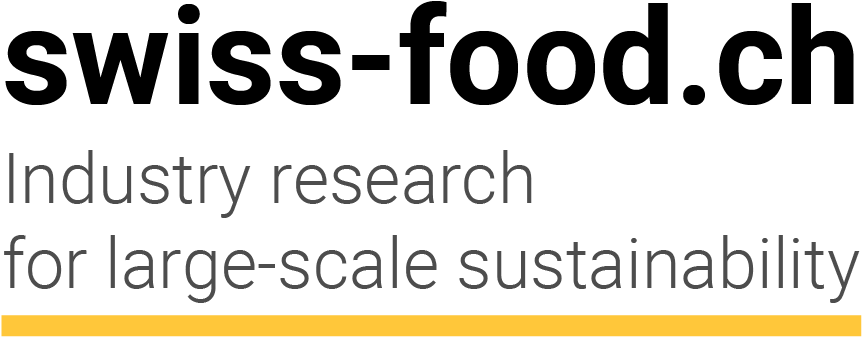New genomic techniques in plant breeding: sustainability needs innovation
Philipp Aerni is a professor at the Fribourg School of Economics and Business and director of the Center for Corporate Responsibility and Sustainability (CCRS).
Tuesday, May 6, 2025
In 2005, Swiss voters opted for a temporary moratorium on genetically modified organisms (GMOs) in agriculture. The aim was to allow scientists to investigate the risks to the environment and health in more detail. The results were available in autumn 2012, but shortly before that, parliament had already decided to extend the moratorium. This was convenient, as it made a discussion of the highly differentiated research results unnecessary.
Like numerous other publicly funded risk research programmes on GMOs in Europe, Swiss researchers were only able to identify risks that are already known from conventional agriculture.
Questions of belief
Since then, the moratorium has been extended several times without much discussion and is set to be extended again by five years from 2025 – even though genetically modified crops have been grown on over 200 million hectares worldwide for over thirty years. But none of that matters anymore, because the concrete experience of farmers in the field or risk research are no longer relevant when it comes to questions of faith.
However, the belief that green genetic engineering is the work of the devil does not seem to be so easily applicable to new breeding techniques. These new genomic methods in plant breeding have been on everyone's lips since two researchers were awarded the Nobel Prize in 2020 for the discovery of the so-called gene scissors.
This tool, discovered in nature, largely eliminates the need to introduce foreign genes, and is therefore essentially just a more precise and targeted form of mutagenesis, an artificial breeding technique that has been used to produce over 3,600 mutated crops since the 1960s. These plants have also been consumed safely in Switzerland for many decades without any special labelling.
Although mutagenesis is also considered genetic engineering under EU law, it has proven itself and can therefore be exempted from genetic engineering regulations.
Various gene-edited crops have now also been successfully commercialised outside Europe; in many cases, they have enabled farmers to achieve better harvests with less use of chemicals despite climate change.
It is therefore not surprising that the Swiss Farmers' Union decided in 2023 to take a closer look at the benefits of such new breeding techniques. Its change of heart also meant that Parliament did not simply passively approve another extension of the moratorium beyond 2025, but instead called on the Federal Council to prepare a draft law for separate regulation of the new breeding techniques.
Nature as an empty metaphor
This draft law was presented by Federal Councillor Albert Rösti at the beginning of April 2025, emphasising that a risk-based approach should be used when assessing new approvals. The new breeding techniques would also be more strictly regulated than in the EU.
However, this does not go far enough for the well-known environmental and organic organisations. They point to the critical attitude of the population, which they have played a major role in shaping. Their primary concern is to protect nature from contamination. However, the concept of nature often serves merely as an empty metaphor for everything that seems familiar and at the same time threatening. Anything new cannot be ‘close to nature’ per se and is therefore subject to mistrust – unless it shows a similarity to something that has been tried and tested.
But this is precisely the case with the new breeding techniques, because they are primarily a refinement of proven and accepted genetic engineering – namely mutagenesis. Many environmentalists, farmers and scientists recognise this and point out to opponents of genetic engineering that they too are concerned about ethics and sustainability. In times of climate change, sustainability cannot work without innovation. New solutions are needed, based on techniques that have proven themselves in the past.
Philipp Aerni is a professor at the Fribourg School of Business and director of the Centre for Corporate Responsibility and Sustainability (CCRS).
This article was first published in the NZZ on 5 May 2025.
Kindly note:
We, a non-native editorial team value clear and faultless communication. At times we have to prioritize speed over perfection, utilizing tools, that are still learning.
We are deepL sorry for any observed stylistic or spelling errors.
Related articles

Sperm crisis with a question mark: what the Swiss study really shows – and what it does not
The state of Swiss semen appears worrying – unless you live slightly south of the city of Aarau. There, sperm quality among young men is reportedly the highest. The prime suspect is quickly identified: pesticides.

Faster Approval of Crop Protection Products Long Overdue
Switzerland bans active ingredients that are withdrawn from the market in the EU. Modern products that are approved in neighboring countries, however, remain blocked. That could finally change. The Economic Affairs Committee of the National Council has adopted a proposal to this effect.

What’s Really in Your Shopping Basket
Genetic engineering in our shopping basket? Yes – and much more often than we think. Whether it’s pasta, bread or vegetables: many of the everyday products we consume come from mutation breeding, which involves altering the genome and is considered safe. It’s high time to debunk the common myths.

Genomic breeding methods are not given a chance to prove themselves
Modern genomic breeding methods are legally classified as genetic engineering – and are therefore still effectively blocked. Yet we have been eating genetically modified plants for decades, just under the label of “classical mutagenesis.” The new, more precise techniques are regulated more strictly than the old ones, even though they are considered safer from a scientific perspective. A contradiction that urgently needs to be corrected. The EU is setting a good example.

